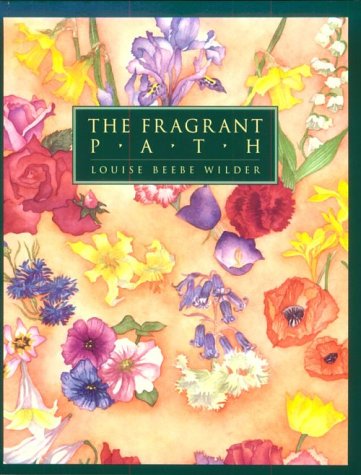 One of my favorite books on fragrance is The Fragrant Path by Louise Beebe Wilder. Published in 1932, and re-issued in 1990 (the Miller Library has both editions), I don’t think there is a garden fragrance book today that’s any better.
One of my favorite books on fragrance is The Fragrant Path by Louise Beebe Wilder. Published in 1932, and re-issued in 1990 (the Miller Library has both editions), I don’t think there is a garden fragrance book today that’s any better.
Why? No other author is as skilled a writer, nor as comprehensive on this topic. Wilder was both an avid gardener and a thorough researcher, and she was skilled at blending book knowledge, quotes from writers past, and hands on (or is it nose on?) experience into her writing. She was also a good story teller, making her books (I recommend them all) read more like a memoir than a gardening guide.
There are no photos in this book. They’re really not necessary. Scent is difficult enough to define without distractions for your other senses, but Beebe is quite successful at describing its elusive qualities. For example, when at a garden party with a witch hazel in full bloom, she notes “The fantastic little tree was sending us messages, remaining quiet for a time and then again seeking to get in touch with us.”
She was incredibly thorough. There are whole chapters on all the popular choices including roses, scented geraniums, and gilliflowers (carnations and their kin). More remarkable are the chapters on scented flowers of the rock garden, scents found in the berry patch or orchard, and, my favorite, “Plants of Evil Odour.”
The fragrance of honey fills another chapter. My mouth waters reading about “rich dark Buckwheat honey” or “delicious amber-hued and very fragrant honey [that] is produced where the bees feed upon the Orange blossoms.”
Most amazing is the chapter on “Wild Scents.” For one who gardened near New York City, she is surprisingly inclusive of the West Coast native flora, describing the sweet qualities of Trillium ovatum, Myrica californica, and Cornus nuttallii amongst others.
She also considers tender trees and shrubs. We are lucky as many of these selections, available to her only as conservatory plants, will survive and spread their perfume in our marine climate!
Published in Garden Notes: Northwest Horticultural Society, Spring 2014